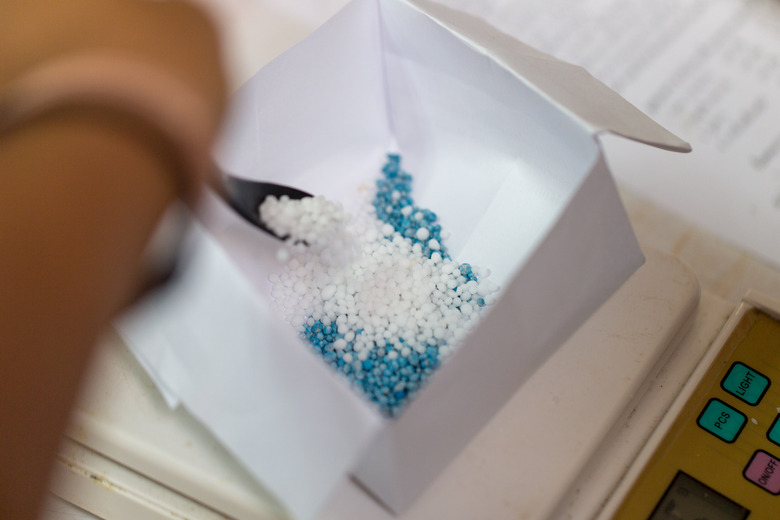How Is Urea Made?
The lungs, kidneys and skin are the main excretory organs, meaning they remove potentially toxic waste products from the body. The lungs get rid of excess carbon dioxide, the skin eliminates excess water and salts, and the kidneys remove excess water, salts and urea. Urea forms when dietary proteins make amino acids after digestion. The liver breaks down excess amino acids to make ammonia, then converts this into urea, which is less toxic in the body than ammonia.
TL;DR (Too Long; Didn't Read)
Urea is the waste produced by humans, as well as many other mammals, amphibians and some fish, when the body metabolizes protein. In the liver, the urea cycle breaks down excess amino acids into ammonia, then transforms ammonia into urea.
Properties of Urea
Properties of Urea
Urea consists of carbon, nitrogen and oxygen. You can find it in urine, sweat, blood and milk in mammals. In its most concentrated form, it is urine. Urea is a crystalline compound, and the nitrogen content is always at least 46 percent when dry. About one million pounds of urea is manufactured in the United States each year, most of it for fertilizers due to its high nitrogen content, which makes it water soluble. Urea is also in animal feedstock, certain plastics and glues, explosive components and commercial products.
The Urea Cycle
The Urea Cycle
The urea cycle starts with deamination, when the liver breaks down amino acids to make ammonia. Ammonia is highly toxic and would be deadly if it accumulated in the body. Fortunately, carrier molecules and enzymes in the liver quickly convert it to urea. The urea cycle absorbs two molecules of ammonia and one molecule of carbon dioxide, creates one molecule of urea and regenerates one molecule of ornithine for the cycle to begin again.
The kidneys remove urea, as well as glucose, water and salts, by filtering blood at high pressures. While glucose, water and salts are reabsorbed into the blood, urea is not. It passes out of the body as a solution in water, which you know as urine. If you have a urea cycle disorder or a genetic disease, your body cannot safely detoxify ammonia.
Synthetic Urea
Synthetic Urea
In a scientific breakthrough in 1828, urea was the first natural compound to be artificially synthesized using inorganic compounds. The chemical compound urea is made by heating ammonium carbamide, a combination of ammonia and carbon dioxide, in a sealed container. The heat dehydrates the compound and forms urea, a crystal-type substance.
Cite This Article
MLA
Gillespie, Claire. "How Is Urea Made?" sciencing.com, https://www.sciencing.com/urea-made-5194345/. 10 April 2018.
APA
Gillespie, Claire. (2018, April 10). How Is Urea Made?. sciencing.com. Retrieved from https://www.sciencing.com/urea-made-5194345/
Chicago
Gillespie, Claire. How Is Urea Made? last modified March 24, 2022. https://www.sciencing.com/urea-made-5194345/
